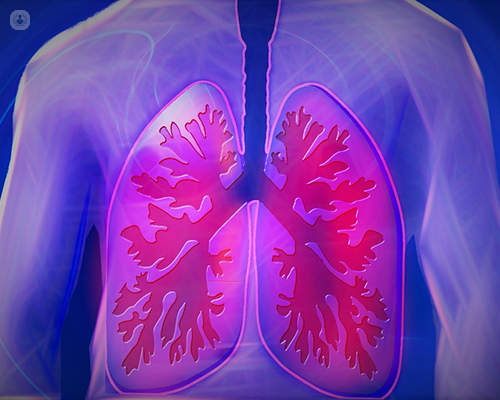All you need to know about pulmonary embolisms
Escrito por:In this article, revered London-based haematologist, Dr Nina Salooja, explains in detail what exactly a pulmonary embolism is, what the main causes are, and reveals when the condition is considered to be severe.

What exactly is a pulmonary embolism?
A pulmonary embolism is an obstruction to the arterial circulation of the lung. The arteries become smaller and smaller. So, if one of these arteries becomes blocked, it means that you will not be able to feed the lung in the right way.
Importantly, the pulmonary circulation sits between the right side of the heart and the left side of the heart. Therefore, if you get a big blood clot, it actually interrupts the whole circulation of the body.
Now, when we use the word embolism, we’re talking about material that has originated from somewhere outside of the lung that is now travelling to the lung. A pulmonary embolism is a blood clot that has formed in the deep veins of the leg or the pelvis that then travels to the lung and obstructs the circulation.
It’s not, however, always a blood clot. Occasionally, you can get an obstruction from fat from a fractured bone. The majority of the time, though, a pulmonary embolism usually means a blood clot.
What are the main causes?
There are many causes of a pulmonary embolism. The most common ones include the following:
- COVID-19 infection
- pneumonia
The traditional risk factors include patients with underlying heart conditions, as well as patients with some type of cancer. Even extremely healthy patients are at risk if they have had a previous operation, or if they have been in hospital for any length of time receiving medical treatment.
Also, any prolonged period of immobility can be associated with an increased risk of suffering from a pulmonary embolism.
For female patients, the main causes include the use of the contraceptive pill, or the use of hormone replacement therapy. Pregnant women are at high risk when it comes to suffering from a pulmonary embolism.
What are the main symptoms of a pulmonary embolism?
The symptoms are incredibly variable. The main ones are typically as follows:
- shortness of breath
- coughing up blood
- chest pain
- back pain
- severe side pain
- feeling lightheaded
When is a pulmonary embolism considered to be severe?
It is considered to be severe if or when the patient suffers from being lightheaded or if they are fainting. We also look for signs of strain on the right side of the heart.
How is a pulmonary embolism treated most effectively?
Treatment that centres on making the patient’s blood thinner is the main treatment option when it comes to treating a pulmonary embolism. Tablets can also be taken. We also consider the treatment option whereby the blood clot is dissolved. We try to surgically remove the blood clot if it is a life-threatening one.
Dr Nina Salooja is a highly esteemed haematologist who specialises in the diagnosis and treatment of pulmonary embolisms. If you are experiencing any of the symptoms outlined in the article above, contact her today and make an appointment with her via her Top Doctors profile.


